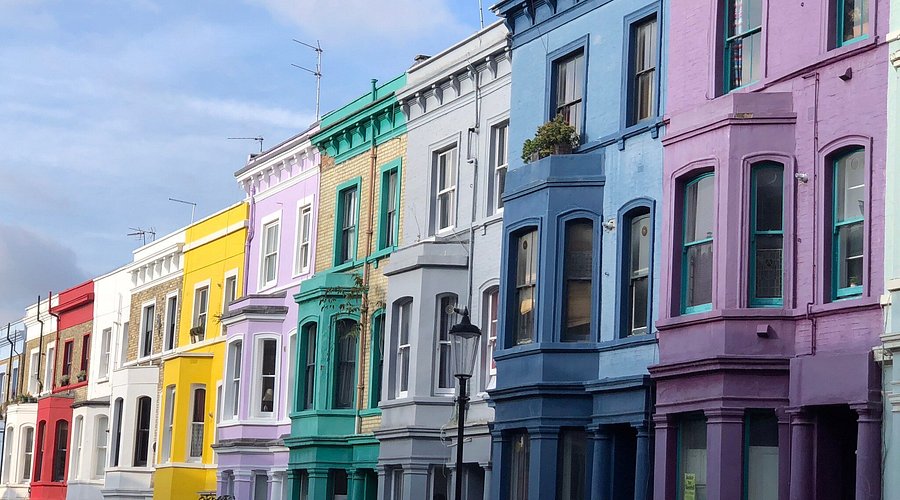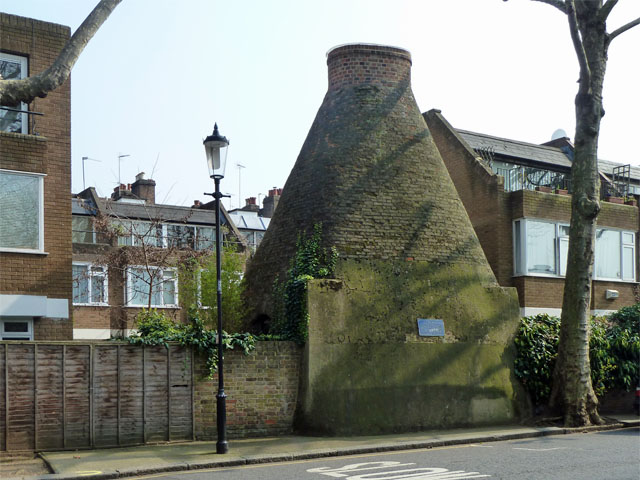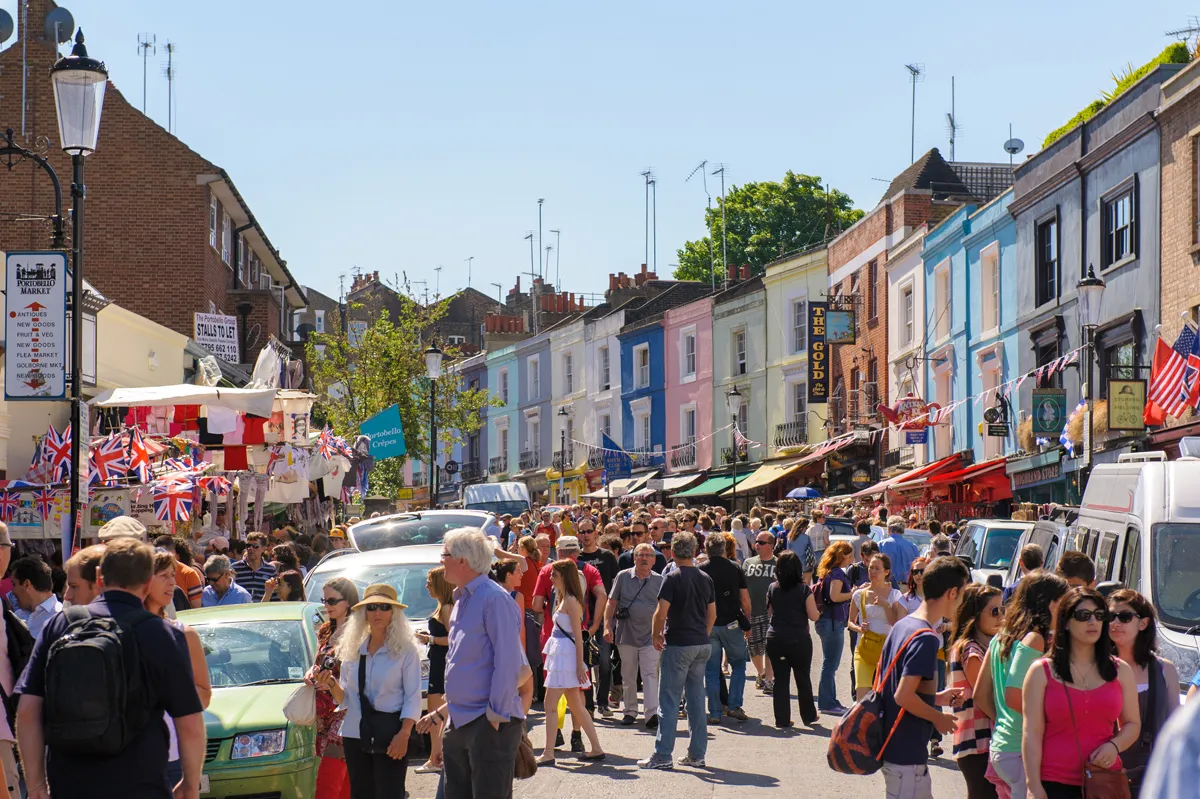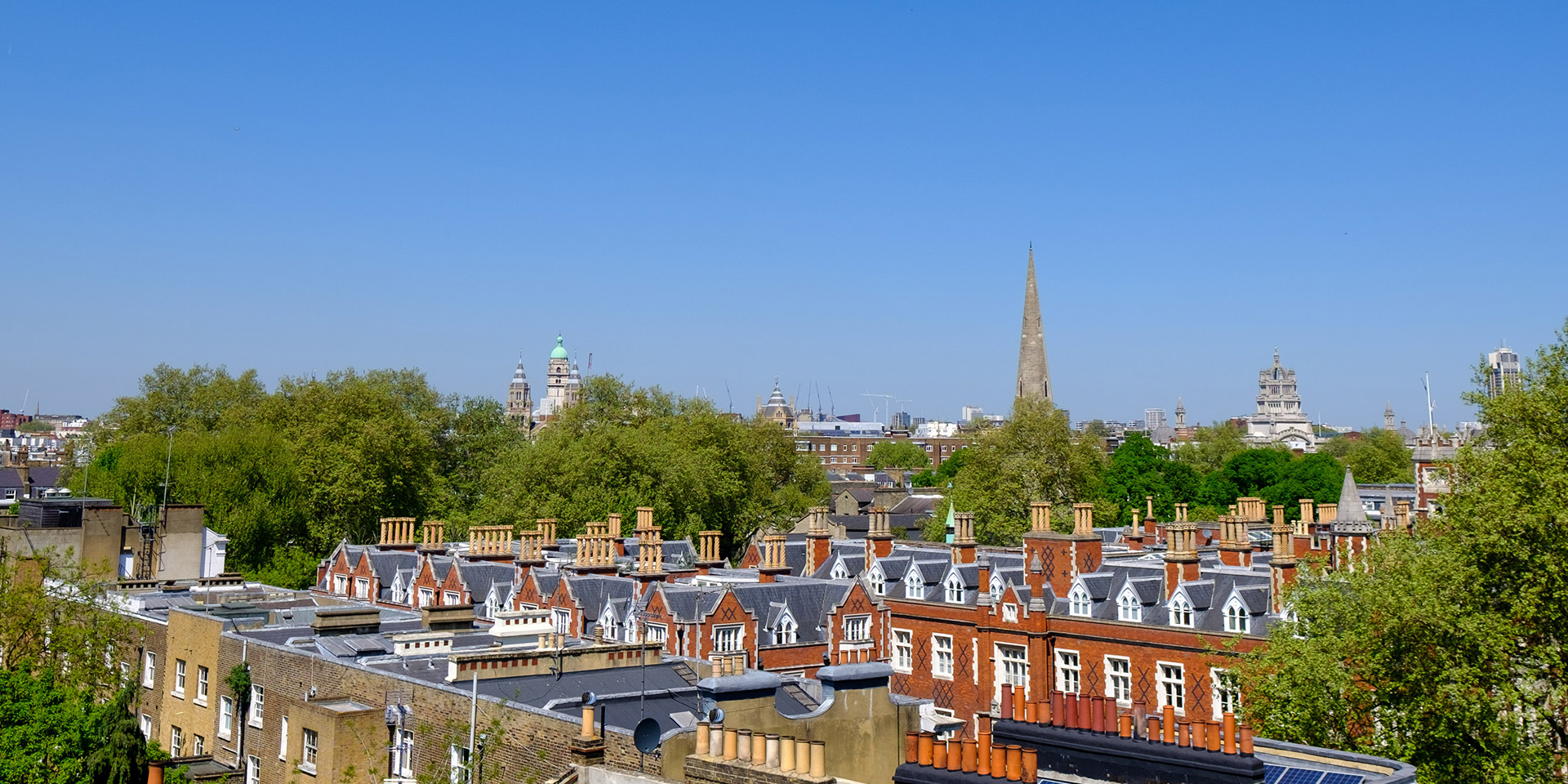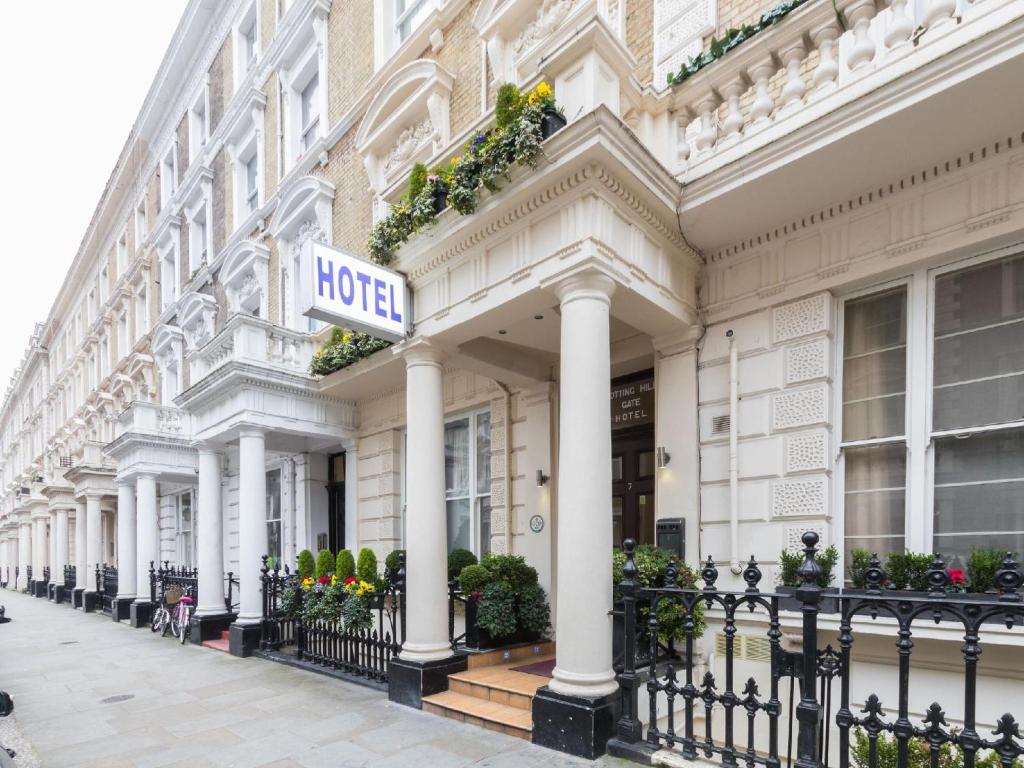Notting Hill - London's Most Stylish Enclave
Discover the real Notting Hill beyond the movie locations. Explore its rich history, vibrant culture, and must-visit attractions in this iconic London neighborhood.
Mar 03, 2025974 Shares194.7K Views
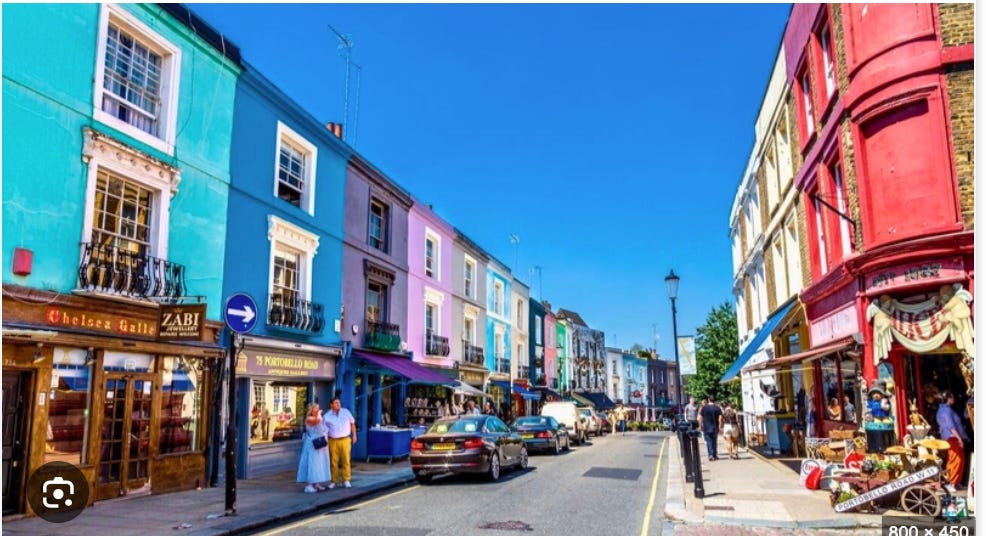
Notting Hillis a vibrant neighborhood in West London known globally for its picturesque streets and colorful houses. It was immortalized in the 1999 romantic comedy Notting Hill, starring Hugh Grant and Julia Roberts. However, there’s much more to this charming area than its Hollywood fame.
From its rich history and cultural diversity to its world-renowned market and annual carnival, Notting Hill offers a unique blend of tradition and modernity, making it one of London’s most sought-after destinations.
This guide will take you beyond the movie locations to explore the real essence of Notting Hill. It will reveal hidden gems and local favorites that make this neighborhood a must-visit for tourists and locals alike.
The History Of Notting Hill
Notting Hill’s history dates back to the early 19th century when it was primarily rural farmland. Over time, it developed into a fashionable suburb for the upper-middle class, with grand Victorian houses and leafy squares. However, the area experienced significant changes in the mid-20th century, becoming home to a large Caribbean immigrant community. This influx of diverse cultures contributed to the vibrant and eclectic character that Notting Hill is known for today.
In the 1950s and 60s, Notting Hill was also marked by social unrest, with tensions between the local population and new immigrants leading to the Notting Hill Riots of 1958. Despite these challenges, the area has transformed over the decades into a symbol of multicultural London, where people from all backgrounds live and work together. Today, Notting Hill is celebrated for its diversity, artistic community, and lively atmosphere, making it a microcosm of London’s broader cultural tapestry.
Origin Of The Name
The exact origin of the name "Notting Hill" remains uncertain, though historical records suggest early versions such as "Knottynghull" in 1356. An 1878 publication, Old and New London, references a manor in Kensington called "Knotting-Bernes" or "Nutting-barns," further linking the name to "Notingbarons" during Henry VIII's reign. While some believed it had ties to King Canute, modern research indicates that "Nott" likely derives from the Saxon name Cnotta, while "ing" represents a settlement or group of people.
Geography
The defining feature of Notting Hill is the hill itself, with its highest point located at the junction of Ladbroke Grove and Kensington Park Gardens. While the area has no official boundaries, it is generally associated with the W11 postcode, stretching from Holland Park Avenue in the south to the Westway in the north. Notting Hill is composed of several sub-neighborhoods, including North Kensington, Kensal Green, Westbourne Park, and Latimer Road, with Ladbroke Grove serving as its central thoroughfare.
Locally, different names are used to refer to parts of Notting Hill, with estate agents often distinguishing North Kensington from the main district. The broader area includes electoral wards such as Saint Charles, Golborne, Notting Barns, Colville, Norland, and Pembridge. Historically significant locations like Notting Barns played a key role in the 1958 race riots. The neighborhood is well-connected by public transport, with five Underground stations - Ladbroke Grove, Westbourne Park, Latimer Road, Notting Hill Gate, and Kensal Green - linking it to the rest of London. Politically, Notting Hill falls under the Kensington parliamentary constituency, represented by Conservative MP Felicity Buchan since 2019.
Early To Mid-20th Century
Notting Hill underwent significant changes in the 20th century, shifting from a middle-class neighborhood to an area associated with cheap lodgings and deteriorating living conditions. The decline began as large homes lost their appeal due to the decreasing employment of domestic servants, leading to their subdivision into multiple tenements. World War II further impacted the district, with several buildings, including All Saints’ Church, suffering bomb damage.
Tensions escalated in 1958 with the Notting Hill race riots, triggered by a violent attack on a Swedish woman married to a West Indian man. Over several nights, mobs targeted Black residents, reflecting deep-seated racial hostility. In response to the dire housing crisis, Bruce Kenrick founded the Notting Hill Housing Trust in 1963, which played a crucial role in advocating for housing reforms and establishing Shelter in 1966.
Late 20th-Century Gentrification
By the 1980s, Notting Hill began attracting affluent families who sought its elegant architecture and communal garden squares. Many streets, once neglected, regained their appeal, particularly around Pembridge Place, Dawson Place, and Ladbroke Grove. Grand stucco-fronted terraces, such as those in Kensington Park Gardens and Pembridge Square, became highly desirable alongside newer, modern housing developments.
However, gentrification also led to cultural shifts, with independent shops on Portobello Road giving way to multinational brands like Starbucks. By the early 2000s, traditional landmarks such as Lipka’s Arcade, once a popular antiques market, were replaced by high-street retailers. Census data from 2011 highlighted demographic changes, showing a decline in historically significant ethnic groups such as Black British and White Irish residents.
The Cultural Melting Pot Of Notting Hill
One of the most compelling aspects of Notting Hill is its cultural diversity. The neighborhood is a melting pot where different cultures and traditions coexist harmoniously. This diversity is most evident in the area’s food scene, with a wide range of international cuisines available in its many restaurants, cafes, and food stalls.
Whether you’re craving Caribbean jerk chicken, Moroccan tagine, or Italian pasta, Notting Hill offers a culinary journey around the world without leaving London. The cultural richness of Notting Hillis also reflected in its art scene. The area is home to numerous galleries, independent cinemas, and theaters that showcase the work of local and international artists.
The Tabernacle, a historic arts center, is a focal point for cultural activities in the neighborhood, hosting everything from art exhibitions and concerts to community events and workshops. This blend of cultures and artistic expression makes Notting Hill a vibrant and dynamic place to explore, offering something new and exciting around every corner.
19th-Century Development
Notting Hill remained largely rural until the early 19th century when London’s expansion reached Bayswater. The Ladbroke family, the main landowners, began developing the Ladbroke Estate in the 1820s, working with architect Thomas Allason. Their vision aimed to establish a fashionable suburb, leading to the creation of streets and squares, many of which still bear the Ladbroke name. The district was initially meant to be called "Kensington Park," a name reflected in local street names and telephone exchange codes.
Allason’s design emphasized large communal garden squares, where houses had direct access to private green spaces rather than public roads. This unique layout remains a defining feature of Notting Hill, making it highly desirable among affluent residents. Another significant development was the Hippodrome racecourse, built-in 1837. However, the venture failed due to waterlogging and a public footpath crossing the track. By 1841, the site was repurposed for housing, leading to the crescent-shaped streets that define the area today.
Notting Hill’s Cultural Influence
Although the houses in Notting Hill were grand, they initially struggled to attract London’s wealthiest residents, who preferred areas like Mayfair and Belgravia. Instead, the neighborhood became home to upper-middle-class families seeking luxury at a lower cost.
Notable literary figures, including John Galsworthy and Thomas Hardy, resided in the area, drawing inspiration from its charm. Arthur Machen, known for his supernatural fiction, also lived here and referenced Notting Hill in his works. Over time, the neighborhood’s artistic and literary connections helped shape its identity, making it a cultural hub within London.
The Famous Portobello Road Market
No visit to Notting Hill would be complete without exploring the famous Portobello Road Market. This iconic market, which stretches over a mile along Portobello Road, is one of the largest and most diverse street markets in London.
It has been a staple of the area since the 19th century and continues to draw crowds from all over the world. The market is divided into several sections, each offering a different shopping experience, from antiques and collectibles to fresh produce and fashion.
The antique section of Portobello Road Market is perhaps the most famous, with hundreds of stalls selling everything from vintage jewelry and rare books to antique furniture and art. It’s a treasure trove for collectors and history enthusiasts, offering a glimpse into the past through its eclectic array of items.
Further down the road, you’ll find the fashion and food sections, where local designers showcase their latest creations and vendors offer a variety of international street food. The market is a reflection of Notting Hill’s diverse character, bringing together people from all walks of life in a bustling and lively environment.
The Notting Hill Carnival
The Notting Hill Carnival is one of the most famous events in London, attracting over a million visitors each year. This vibrant celebration of Caribbean culturehas been held annually since 1966 and is Europe’s largest street festival. The carnival takes place over the August bank holiday weekend, transforming the streets of Notting Hill into a sea of color, music, and dance. It’s a joyful and energetic event that showcases the rich cultural heritage of the Caribbean community in London.
The carnival is known for its elaborate costumes, with participants donning brightly colored outfits adorned with feathers, beads, and sequins. The sound of steel drums, reggae, and calypso music fills the air as the parade winds its way through the streets, creating an infectious party atmosphere.
In addition to the parade, the carnival features numerous sound systems, live performances, and food stalls offering traditional Caribbean dishes like jerk chicken, rice and peas, and fried plantains. The Notting Hill Carnival is a celebration of diversity and inclusivity, embodying the spirit of community and cultural pride that defines Notting Hill.
Exploring Notting Hill’s Green Spaces
Notting Hill is not only known for its vibrant culture and bustling markets but also for its beautiful green spaces. The neighborhood is dotted with several parks and gardens, offering a peaceful escape from the urban hustle and bustle.
One of the most popular green spaces in the area is Holland Park, a large and picturesque park that features woodland, formal gardens, and a Japanese garden. Holland Park is also home to the Kyoto Garden, a tranquil oasis with a koi pond, waterfalls, and carefully manicured landscapes, making it a perfect spot for relaxation and reflection.
Another notable green space in Notting Hill is Ladbroke Square Garden, one of the largest private garden squares in London. While access is restricted to residents, the garden is surrounded by some of the area’s most stunning Victorian architecture, and its leafy streets are perfect for a stroll.
For those looking to explore more public spaces, Kensington Gardens is just a short walk away, offering expansive lawns, historic monuments, and the famous Serpentine Gallery. These green spaces are an integral part of Notting Hill’s charm, providing residents and visitors alike with a connection to nature in the heart of the city.
Notting Hill’s Arts And Literary Heritage
Notting Hill has long been associated with the arts and literature, with many famous writers, artists, and musicians having called the area home. In the 1950s and 60s, Notting Hill was a hub for the British counterculture movement, attracting bohemians, artists, and intellectuals. The area’s creative energy is still palpable today, with numerous galleries, bookshops, and cultural institutions contributing to its artistic legacy.
One of the most iconic literary landmarks in Notting Hill is the Notting Hill Bookshop, which inspired the bookshop in the movie "Notting Hill." The shop, located on Blenheim Crescent, is a must-visit for book lovers, offering a carefully curated selection of books on travel, culture, and history. Another cultural gem is the Electric Cinema on Portobello Road, one of the oldest working cinemas in the UK. The cinema’s luxurious interiors and eclectic programming make it a favorite among locals and visitors alike.
In addition to its literary and cinematic heritage, Notting Hill is also home to several art galleries that showcase contemporary and modern art. The Westbank Galleryand Graffik Gallery are just two of the many spaces where you can discover works by emerging and established artists. Whether you’re a fan of literature, film, or visual arts, Notting Hill’s rich cultural heritage offers endless opportunities for exploration and inspiration.
Dining And Nightlife In Notting Hill
Notting Hill’s dining and nightlife scenes are as diverse and dynamic as the neighborhood itself. The area is home to a wide range of restaurants, cafes, and bars, offering something to suit every taste and occasion. Whether you’re in the mood for a leisurely brunch, a fine dining experience, or a night out with friends, Notting Hill has it all.
For a taste of the neighborhood’s multicultural influences, head to The Ledbury, a Michelin-starred restaurant known for its innovative European cuisine. The restaurant’s elegant setting and impeccable service make it a popular choice for special occasions. If you’re looking for something more casual, Ottolenghi on Ledbury Road offers a delectable selection of Mediterranean-inspired dishes and pastries, perfect for a relaxed meal or a quick coffee break.
When it comes to nightlife, Notting Hill offers a variety of options, from cozy pubs to trendy cocktail bars. The Churchill Arms is a local favorite, known for its floral exterior and traditional British pub atmosphere. For a more modern vibe, visit Trailer Happiness, a tiki-themed bar on Portobello Road that serves up creative cocktails in a retro setting. Whether you’re exploring the area during the day or night, Notting Hill’s dining and nightlife scenes are sure to leave a lasting impression.
Areas Of Notting Hill
Notting Hill, one of London's most iconic neighborhoods, is renowned for its vibrant culture, elegant architecture, and rich history. While often regarded as a single district, Notting Hill is made up of several distinct sub-areas, each with its unique character and charm. These areas include North Kensington, Ladbroke Grove, Westbourne Park, Portobello Road, Notting Hill Gate, and Kensal Green. Each section contributes to the area's dynamic blend of affluence, diversity, and artistic influence.
1. North Kensington
North Kensington is the northernmost part of Notting Hill and has historically been a working-class area. It was once notorious for its poor housing conditions and was central to the Notting Hill race riots of 1958. However, the area has since undergone significant regeneration and now features a mix of traditional Edwardian and Victorian terraces alongside modern housing developments.
North Kensington is home to several key landmarks, including Trellick Tower, a striking Brutalist-style residential building designed by Ernő Goldfinger. It also houses The Museum of Brands, which showcases British consumer culture. The area remains a hub for London’s Caribbean community, with many of the Notting Hill Carnival festivities taking place here.
2. Ladbroke Grove
Ladbroke Grove is one of Notting Hill’s most well-known areas, named after the road that runs through its center. It is known for its impressive communal garden squares, which were a major part of 19th-century planning by the Ladbroke family. The large stucco-fronted houses along Ladbroke Grove and its neighboring streets attract wealthy residents, giving the area an air of exclusivity.
Despite gentrification, Ladbroke Grove retains a strong artistic and alternative presence. It was once home to counterculture movements in the 1960s and 1970s, and musicians like Joe Strummer of The Clash lived here. The Westway Flyover, a major road built in the 1960s, cuts through the area, but under its arches, you can find music venues, creative studios, and skate parks that give Ladbroke Grove an urban, edgy feel.
3. Westbourne Park
Westbourne Park is located on the eastern side of Notting Hill and has become a highly desirable residential area. With its tree-lined streets and elegant Victorian terraces, it offers a quieter, more residential feel compared to the bustling streets of Portobello Road.
One of the most notable features of Westbourne Park is its access to green spaces. The area is close to Kensington Gardens and Hyde Park, providing residents with plenty of outdoor recreational opportunities. The local shopping and dining scene is also thriving, with independent boutiques, artisan cafés, and gastro pubs contributing to the neighborhood's charm.
4. Portobello Road
Portobello Road is arguably the heart of Notting Hill, famous worldwide for its Portobello Road Market, one of the largest and most well-known street markets in London. The market stretches over a mile and offers everything from antiques and vintage clothing to fresh produce and street food. It is a major attraction for both tourists and locals, particularly on Saturdays when the market is at its busiest.
Portobello Road is also home to a variety of colorful townhouses, which have become iconic representations of Notting Hill. The area has a rich literary and cinematic history, and it was featured in the film "Notting Hill" (1999) starring Hugh Grant and Julia Roberts. Despite increasing commercialization, Portobello Road still maintains a bohemian and creative atmosphere, attracting artists, writers, and musicians.
5. Notting Hill Gate
Notting Hill Gate is the district's commercial and transport hub, centered around the Notting Hill Gate Underground Station. The area is more urbanized compared to other parts of Notting Hill, with a mix of modern developments and period buildings.
One of the standout features of Notting Hill Gate is its thriving independent cinema scene, with landmarks such as The Gate Cinema, a historic venue known for screening arthouse and international films. The area is also home to several prestigious private residences, upscale restaurants, and luxury hotels, making it a sought-after destination for affluent professionals.
6. Kensal Green
Kensal Green, located on the northwestern edge of Notting Hill, has emerged as one of London's trendiest areas in recent years. Traditionally a working-class district, Kensal Green has experienced rapid gentrification, attracting a younger demographic of creatives, entrepreneurs, and celebrities.
The area is known for the Kensal Green Cemetery, one of the "Magnificent Seven" cemeteries of London, featuring grand Victorian-era tombs and mausoleums. Kensal Green also boasts a thriving café culture, stylish bars, and music venues, making it a popular spot for nightlife and entertainment. Despite its transformation, it retains a sense of community and a diverse population.
FAQs About Notting Hill
What Is Notting Hill Famous For?
Notting Hill is famous for its colorful houses, the Portobello Road Market, and the Notting Hill Carnival. It’s also known for its vibrant cultural scene, diverse community, and being the setting for the popular movie "Notting Hill."
How Do I Get To Notting Hill?
Notting Hill is easily accessible by public transport, with Notting Hill Gate Underground Station being the most central. The station is served by the Central, Circle, and District lines, providing easy access from other parts of London.
What Can I Do In Notting Hill?
There’s plenty to do in Notting Hill, from exploring the Portobello Road Market and visiting the area’s many galleries and cinemas to enjoying the annual Notting Hill Carnival. The neighborhood is also home to numerous parks, cafes, and shops, offering something for everyone.
Is Notting Hill Suitable For Families?
Yes, Notting Hill is a family-friendly neighborhood with plenty of activities for all ages. The area’s parks, such as Holland Park and Kensington Gardens, are great for outdoor activities, while the Portobello Road Market offers a fun shopping experience for the whole family.
When Is The Best Time To Visit Notting Hill?
Notting Hill is lively throughout the year, but the best time to visit is during the summer months, particularly in August, when the Notting Hill Carnival takes place. The market is also at its busiest and most vibrant on Saturdays.
Conclusion
Notting Hill is much more than just a picturesque backdrop for a romantic movie. It’s a neighborhood with a rich history, a diverse cultural scene, and a vibrant community that makes it one of London’s most exciting places to explore.
If you’re wandering through the Portobello Road Market, enjoying the carnival, or simply soaking in the atmosphere of its charming streets, Notting Hill offers a unique and unforgettable experience.
So, take a step beyond the movie locations and discover the real Notting Hill, where history, culture, and modernity converge to create a truly special part of London.
Jump to
The History Of Notting Hill
Origin Of The Name
Geography
Early To Mid-20th Century
Late 20th-Century Gentrification
The Cultural Melting Pot Of Notting Hill
19th-Century Development
Notting Hill’s Cultural Influence
The Famous Portobello Road Market
The Notting Hill Carnival
Exploring Notting Hill’s Green Spaces
Notting Hill’s Arts And Literary Heritage
Dining And Nightlife In Notting Hill
Areas Of Notting Hill
FAQs About Notting Hill
Conclusion
Latest Articles
Popular Articles

